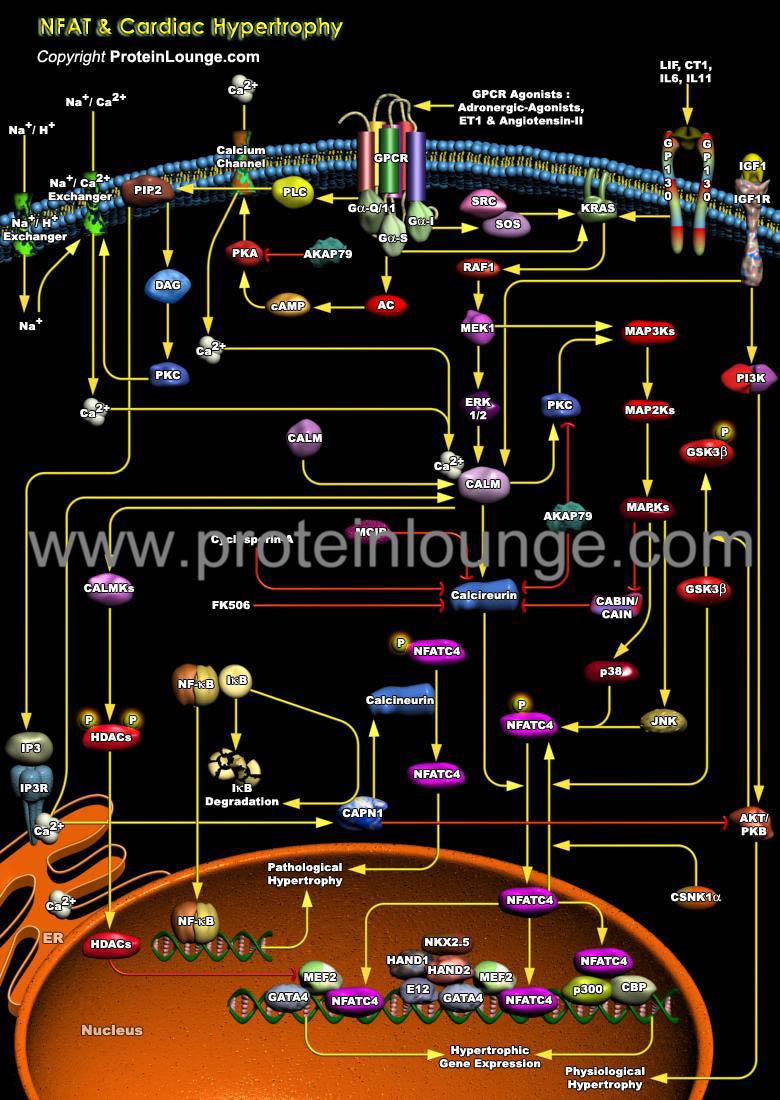Pathways
NFAT and Cardiac Hypertrophy

Description:
Cardiac failure, one of the largest health care burdens in the United States and other developed countries is often associated with prolonged and maladaptive cardiac hypertrophy, defined as a compensatory mechanism of the heart that helps to maintain cardiac output during pathological states with sustained increases in hemodynamic load (Ref.1). As cardiomyocytes lose the ability to divide soon after birth, cardiac hypertrophy offers an important adaptive response in vivo that allows the organism to maintain or increase i...
References:
-
NFATc1 mediates vascular endothelial growth factor-induced proliferation of human pulmonary valve endothelial cells.
J Biol Chem. 2003 Jan 17; 278(3): 1686-92. Epub 2002 Nov 09. -
The cyclic AMP signaling pathway: Exploring targets for successful drug discovery (Review).
Mol Med Rep. 2016 May;13(5):3715-23. doi: 10.3892/mmr.2016.5005. Epub 2016 Mar 18. Review. -
Probing heterotrimeric G protein activation: applications to biased ligands.
Curr Pharm Des. 2012;18(2):128-44. Review. -
Cardiac hypertrophy: the good, the bad, and the ugly.
Annu Rev Physiol. 2003; 65:45-79. Epub 2003 Jan 09. Review.
You can view details of this pathway by subscribing:
Copyright © Protein Lounge Inc.
Terms & Conditions

